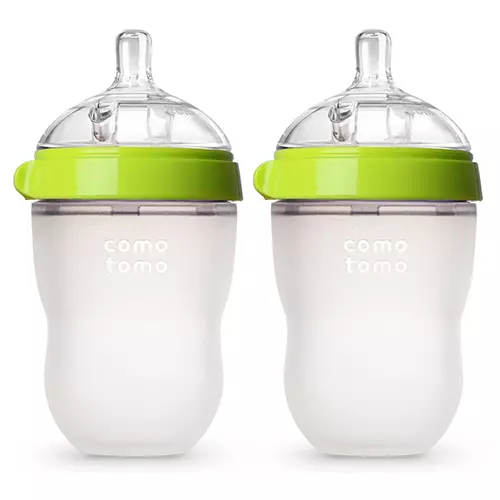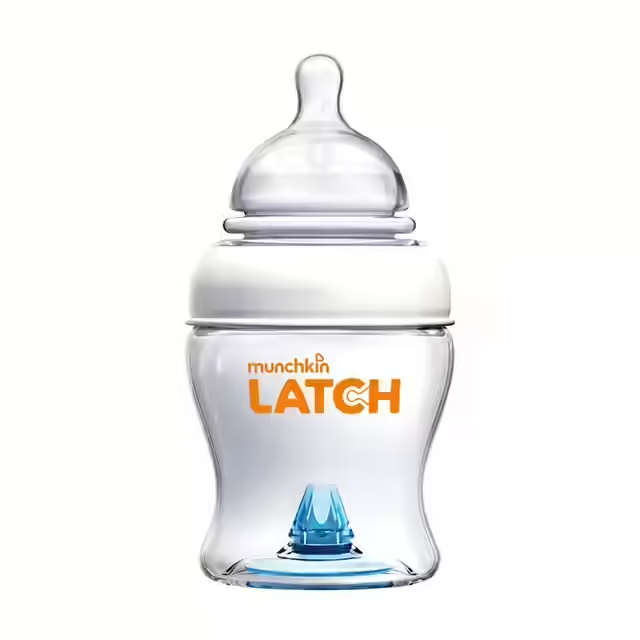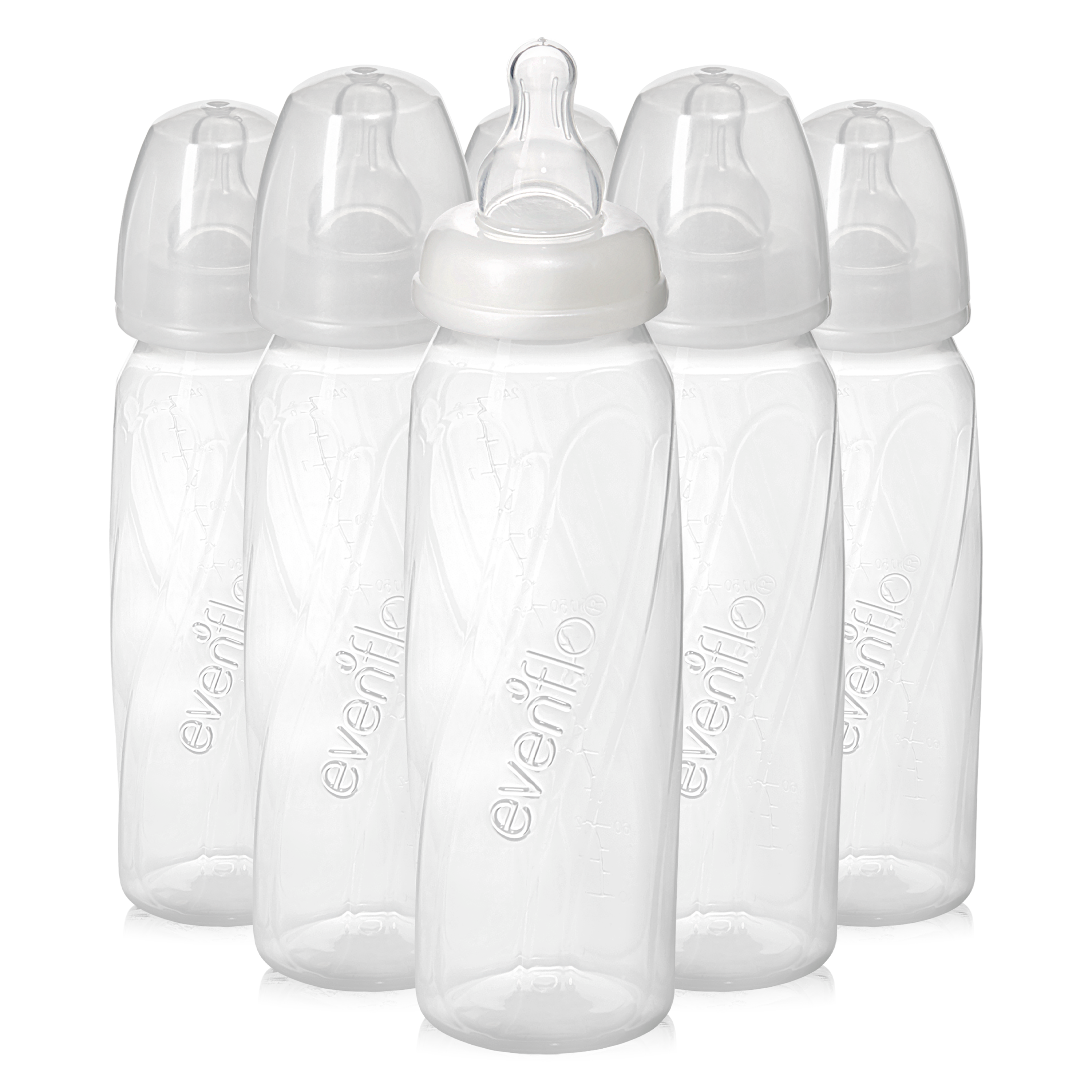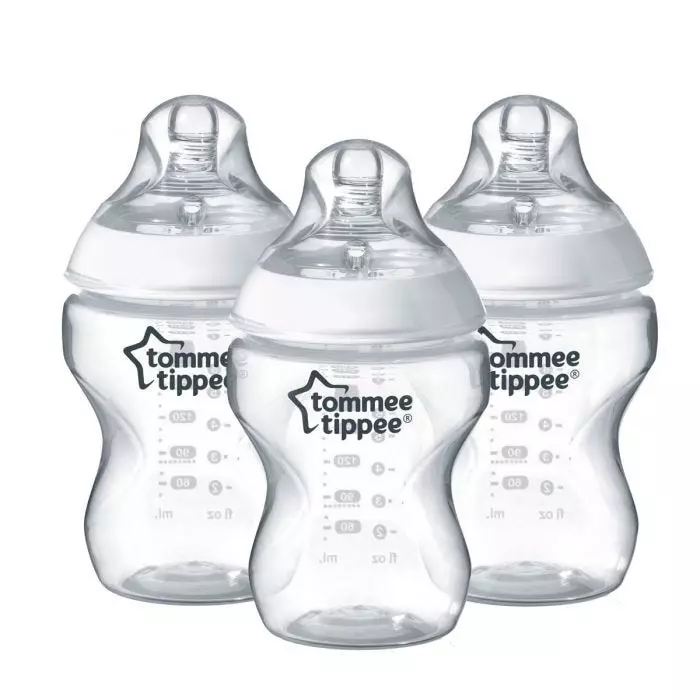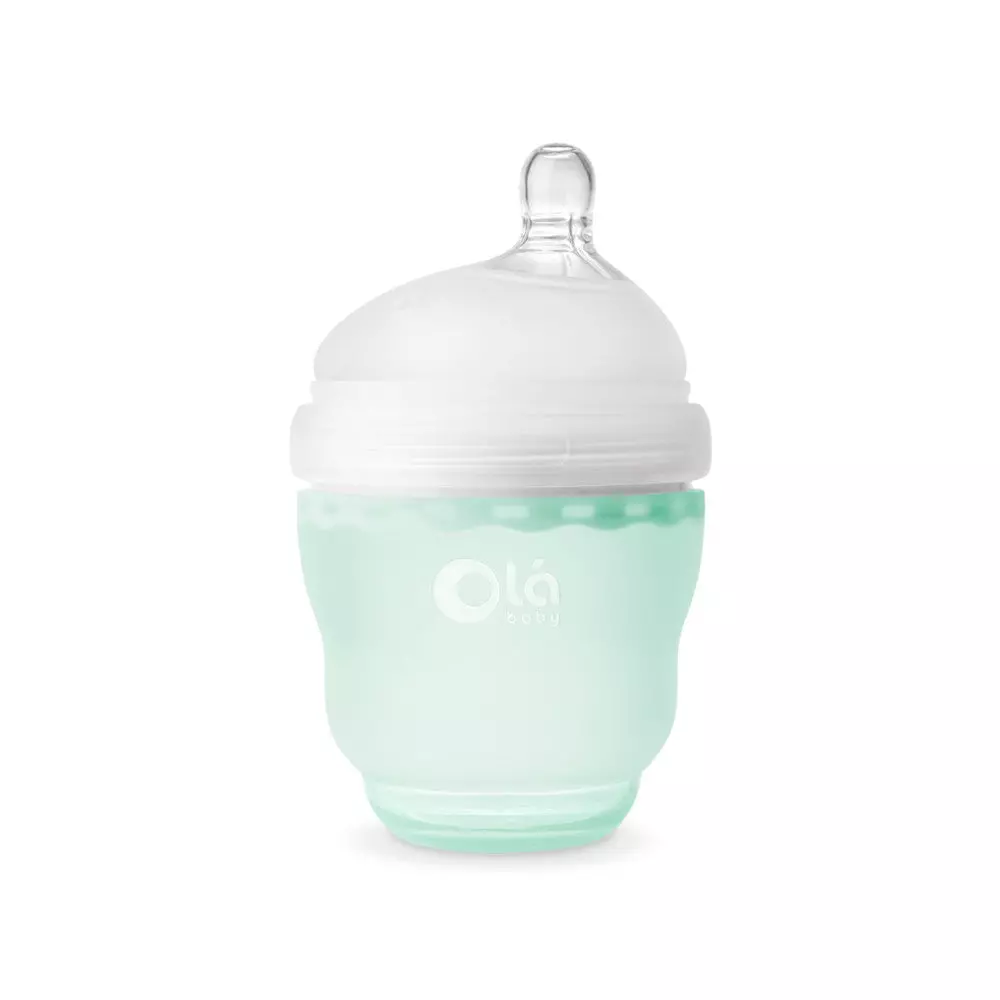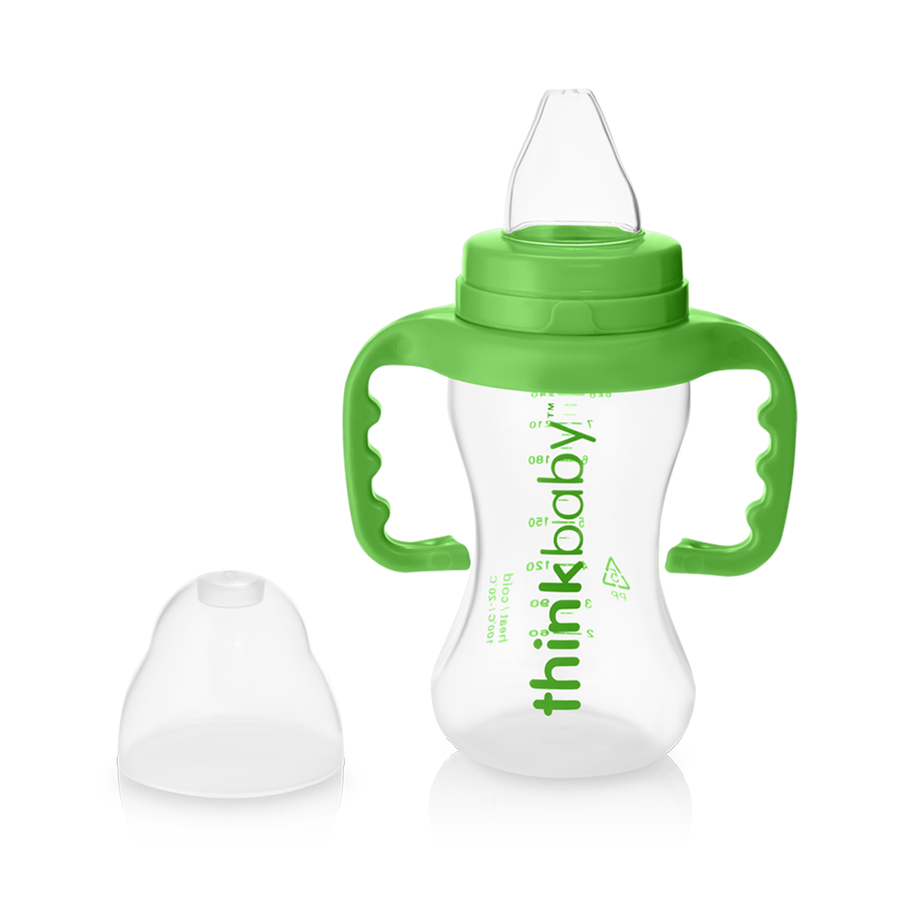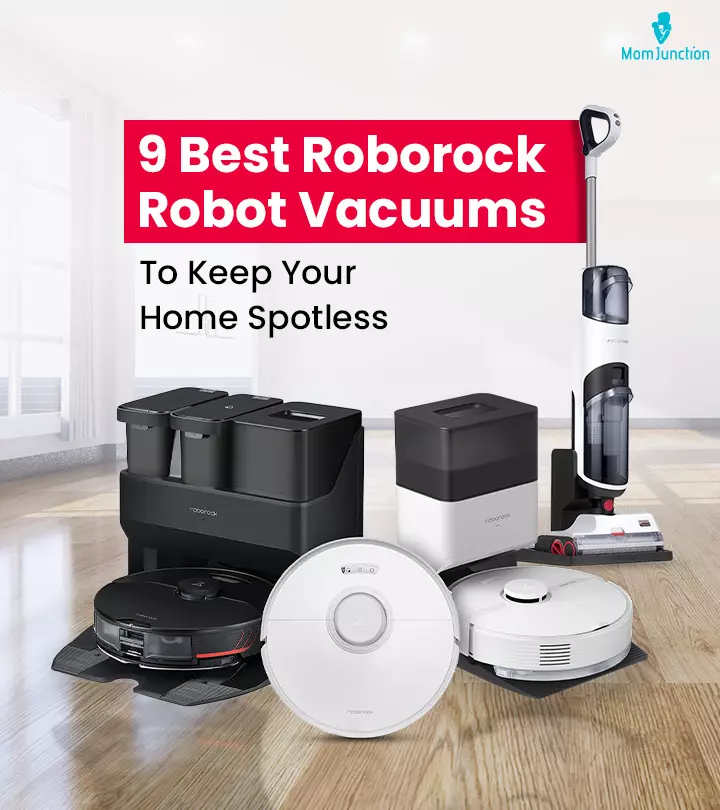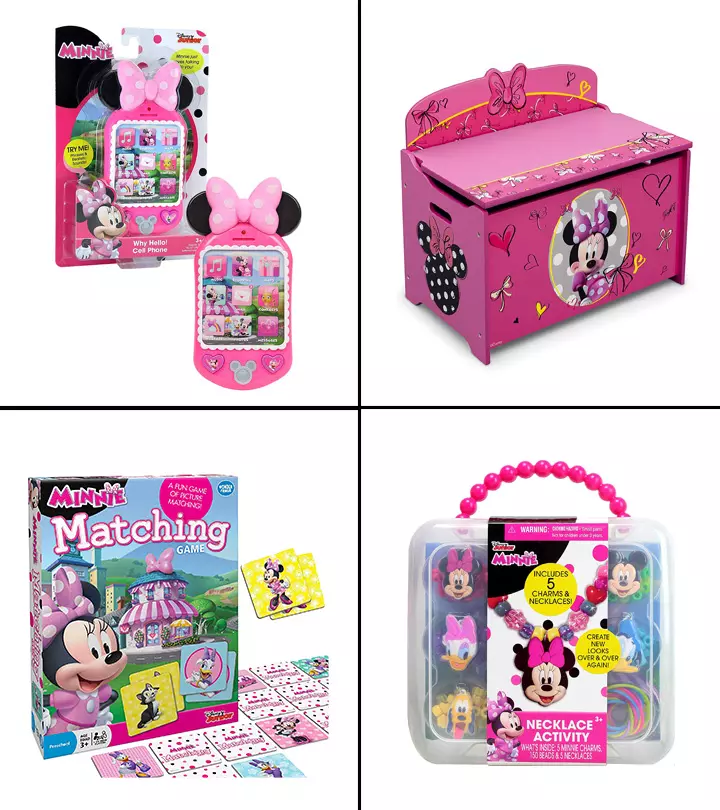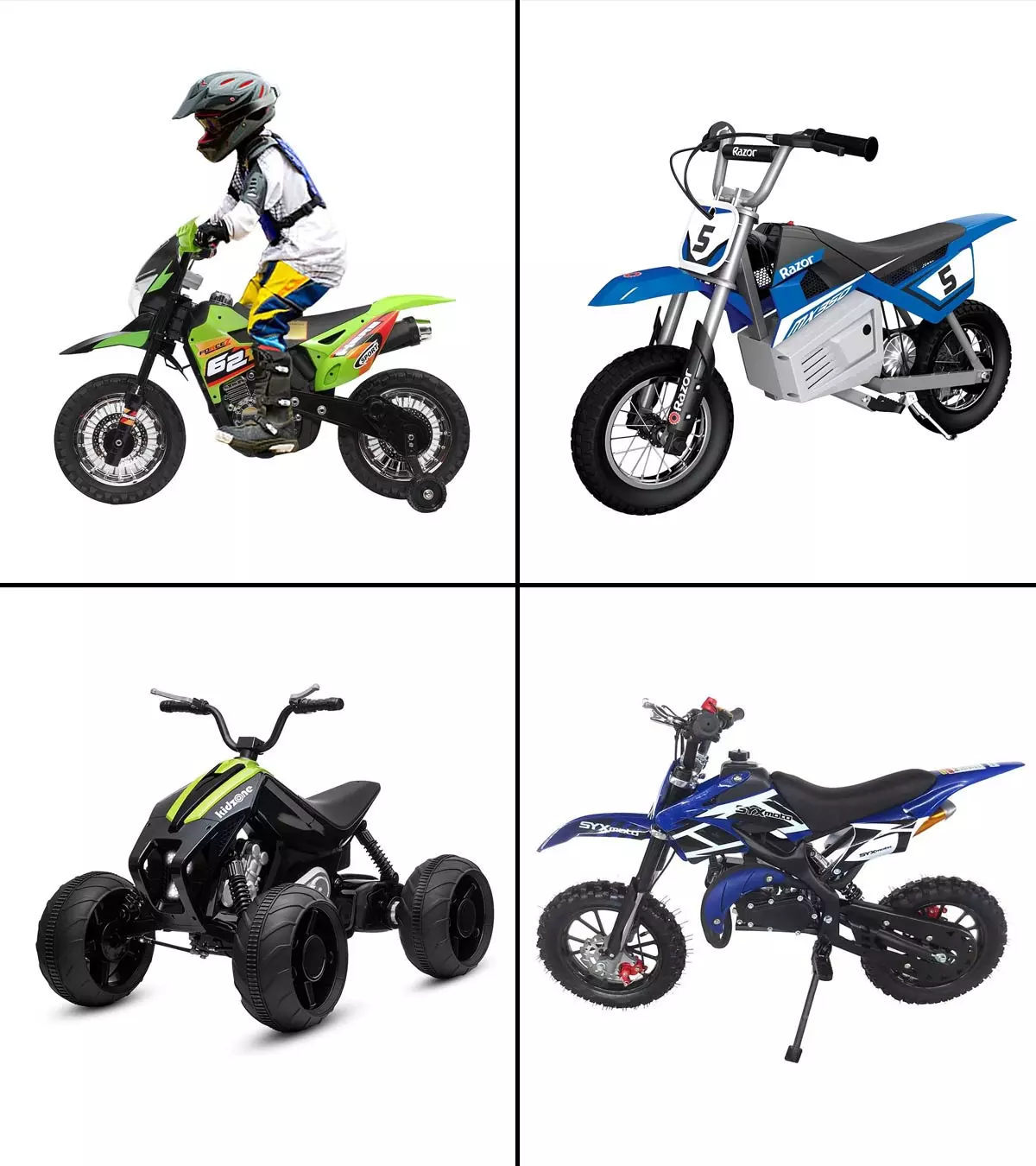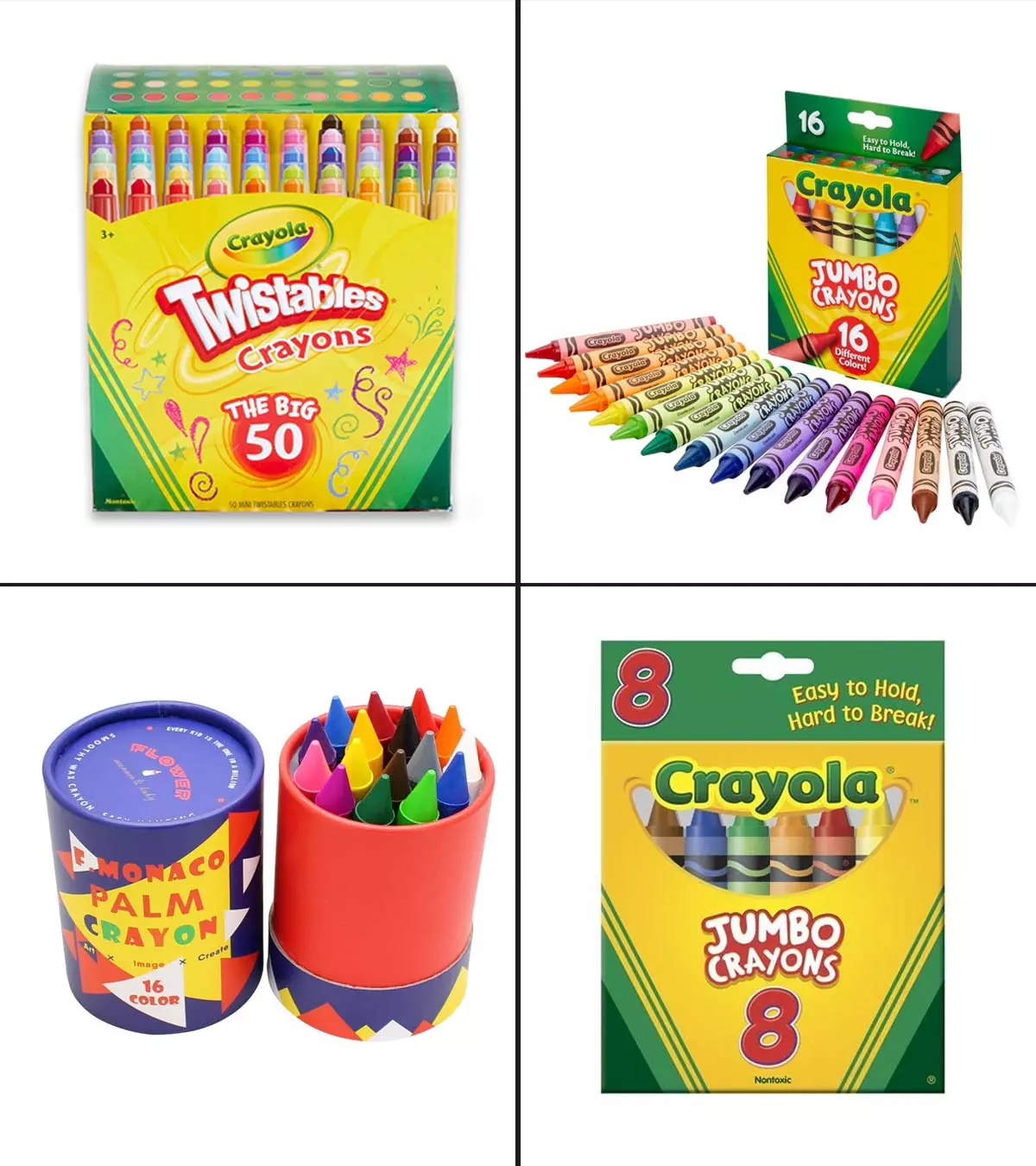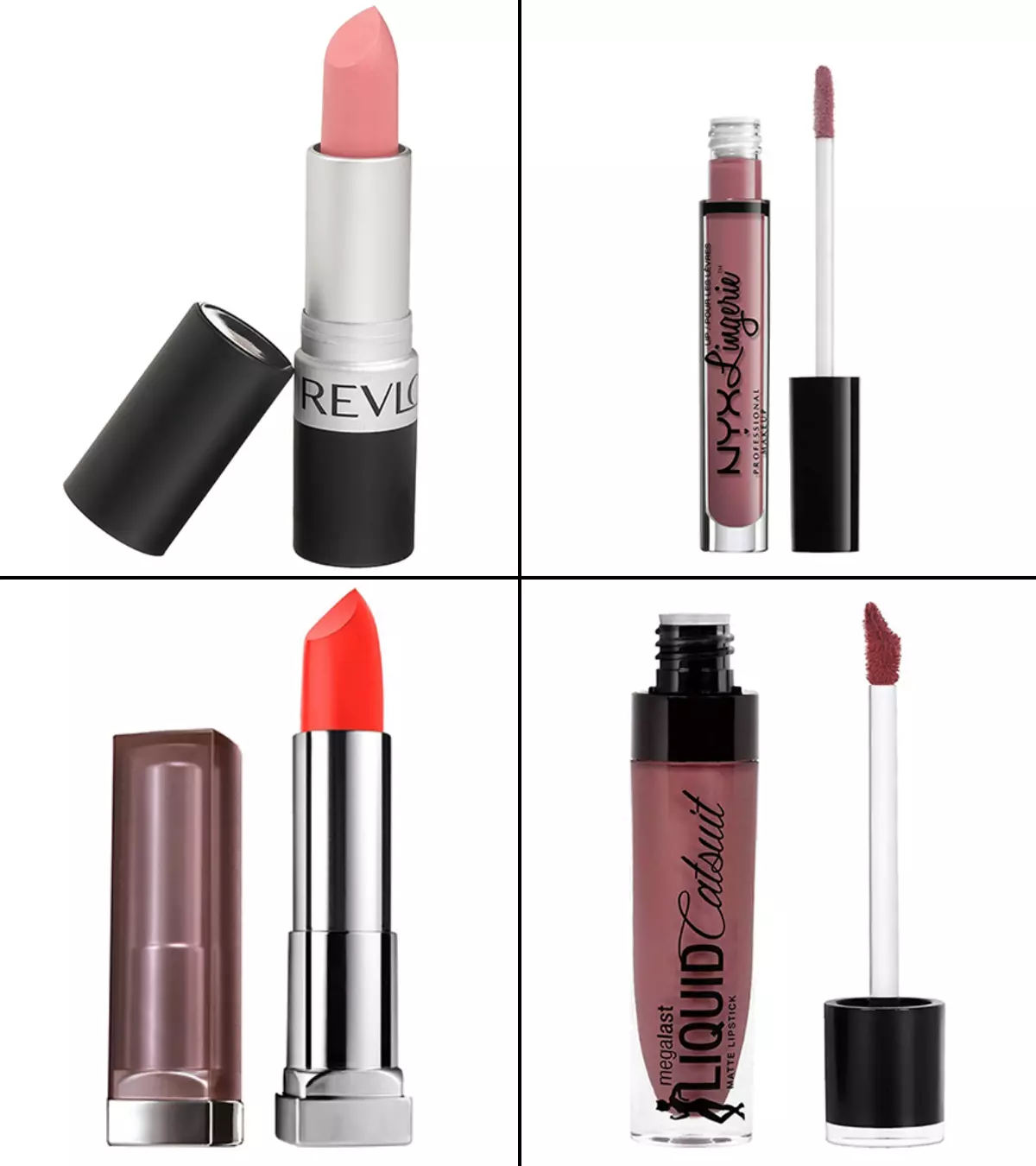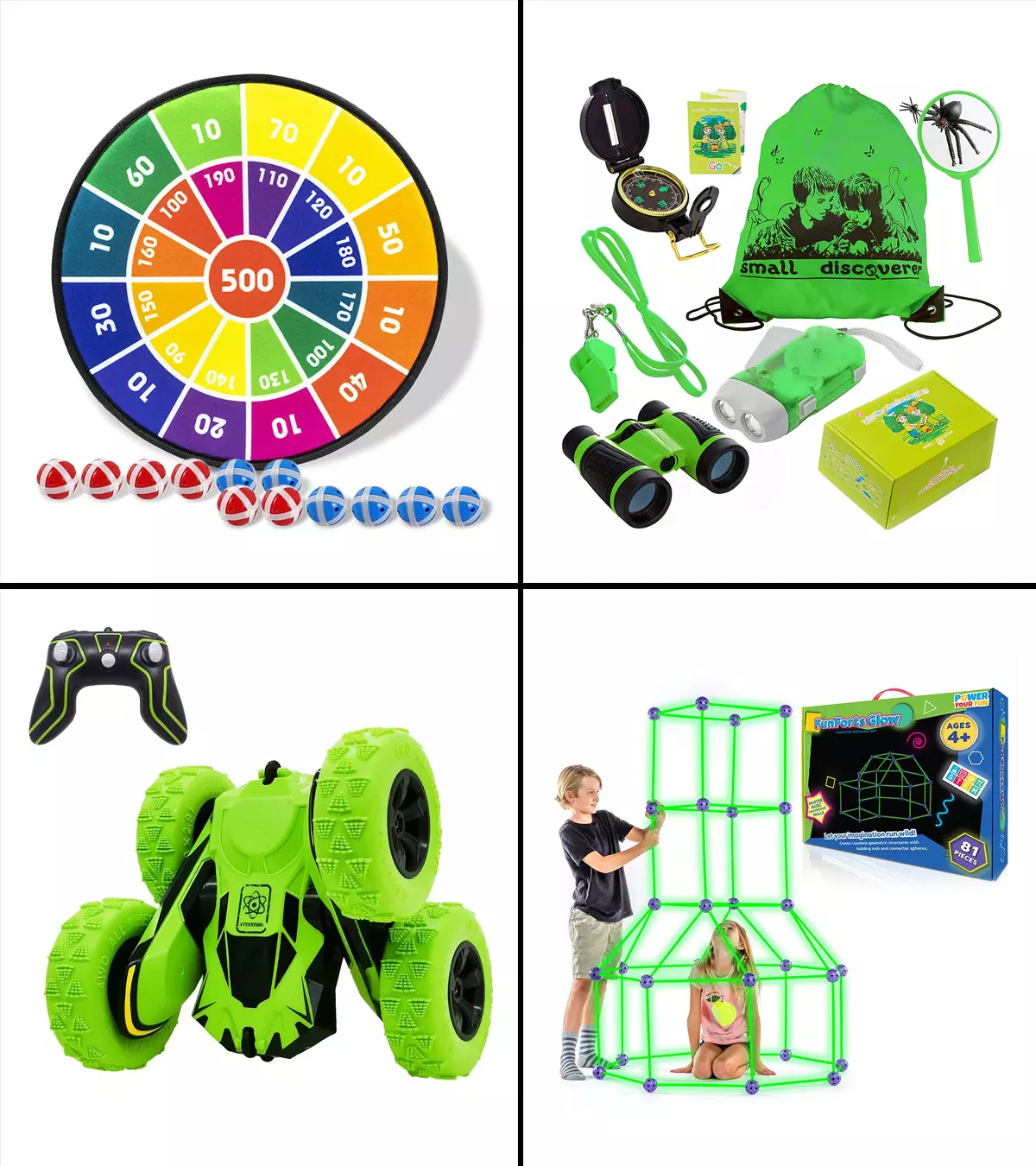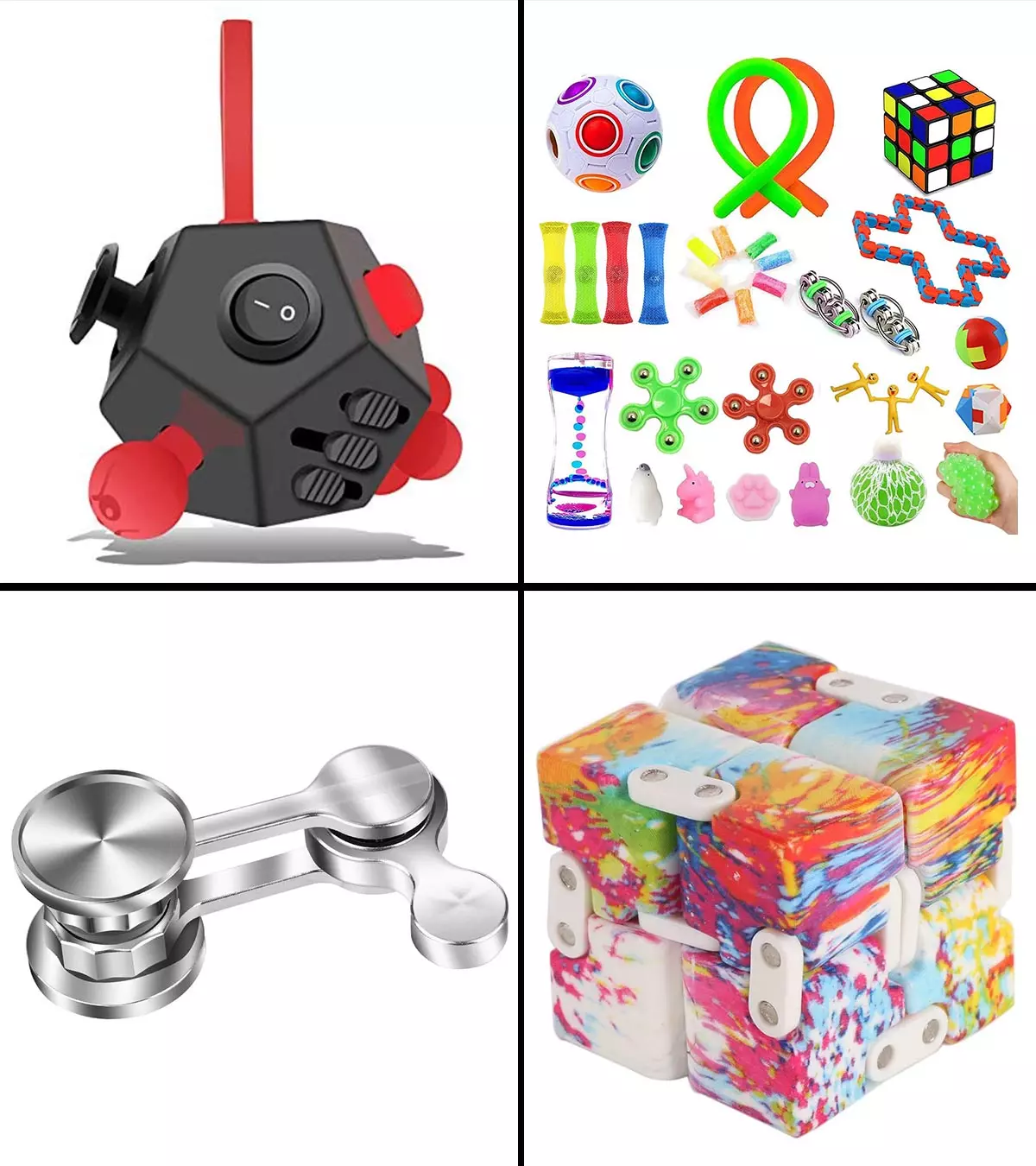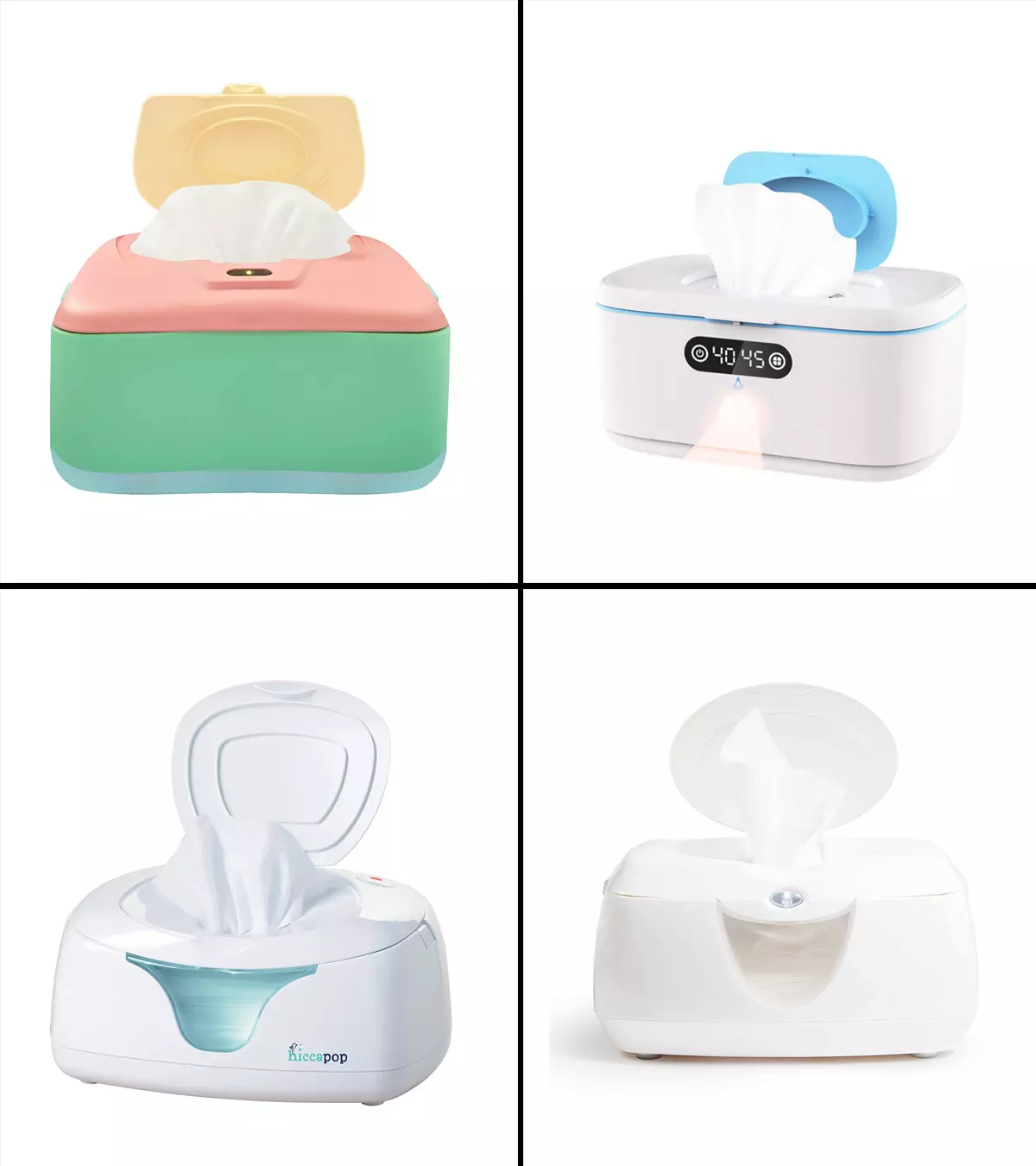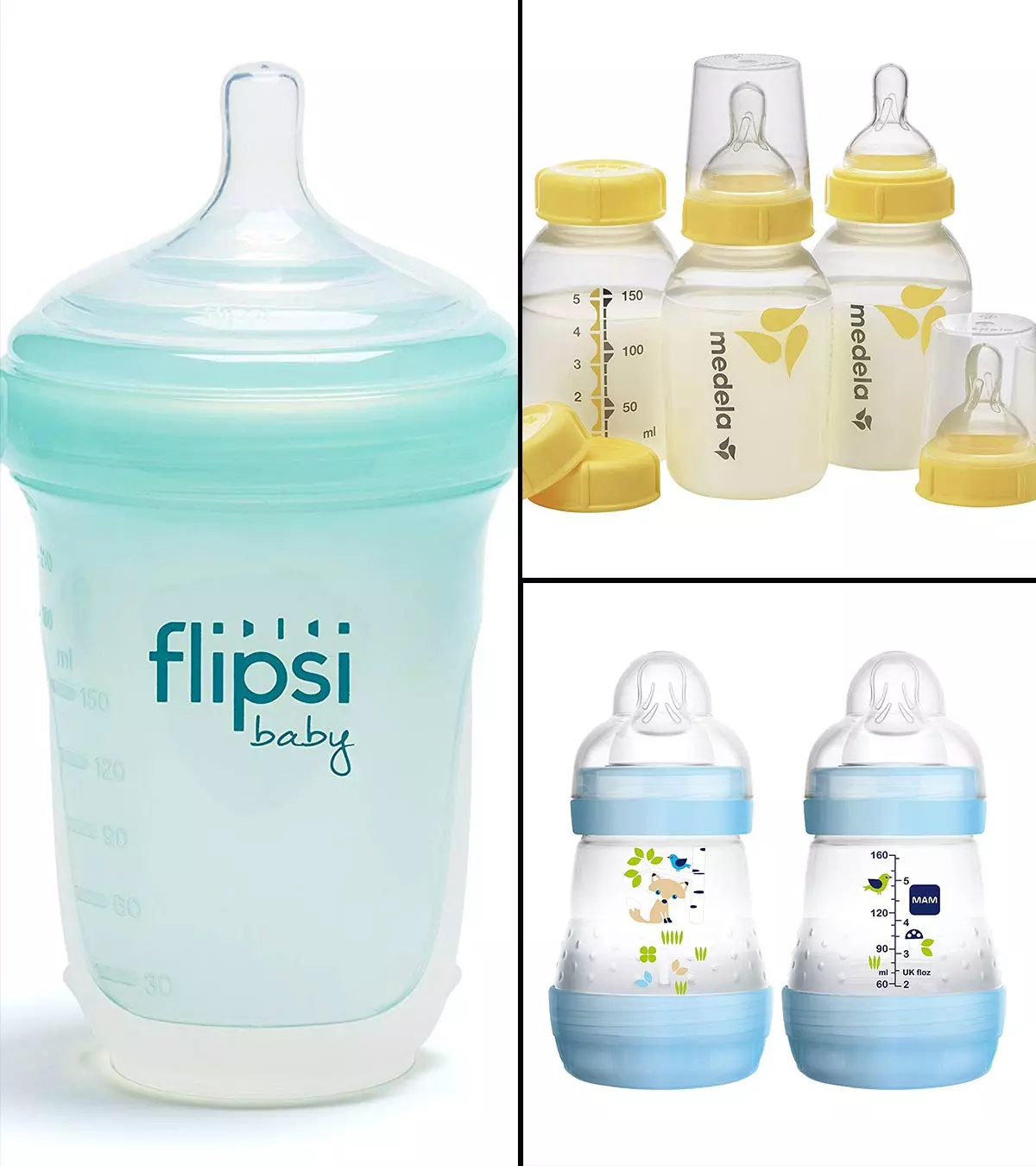
Image: MomJunction Design Team
If you’re searching for the best baby bottles to feed expressed breast milk or even formula to your munchkin, you’re at the right place. Baby bottles help you store milk conveniently and feed your baby anytime, anywhere.
These baby feeding bottles are available in various nipple choices and sizes, specifically tested depending on your needs. If you are overwhelmed by the sheer variety in the market, we’ve tried to make your search easier by adding tried-and-tested products approved by moms. Here is a compilation of safe and effective baby bottles you could consider investing in.
Top Picks
21 Best Baby Bottles
1. Best Wide-Nippled: Philips Avent Natural Baby Bottle
This bottle by the trusted brand Philips Avent has a specialized nipple valve that directs air towards the bottle instead of the baby’s tummy, thus making it one of the best baby feeding bottles for infants with gas and colic problems. The doctor-approved bottle comes in volume capacities of 2, 4, 9, and 11oz (60, 118, 266, and 32 ml). This video will provide you with added insights about the product.
Pros
- Silicone nipple is soft and easy to latch on to for babies
- Wider nipple resembles the breast nipple
- Specialized “petal” design prevents nipple collapse
- Made of BPA-free polypropylene
- Includes a slow flow nipple for babies older than a month
Cons
- Might leak
- May not be easy to clean
[ Read : Philips Avent Anti Colic Bottle Reviews ]
2. Best Silicone-Made: Comotomo Baby Bottle
You can boil this bottle or place it in a microwave to sterilize it. The bottle’s body is entirely made of silicone, which makes it flexible and unbreakable and safe and effective. It has only four parts: the main bottle, a stopper ring, the nipple, and the cap. Here’s a product testing video to help you know more about this product’s features and benefits before you decide to test it out.
Pros
- No BPA, PVC, and phthalates
- Dishwasher-safe and easy to clean
- Dual vents on the nipple allow air passage
- Can sustain a maximum temperature of 120°C (248°F)
- Available in various sizes
- Includes a medium-flow nipple suitable for three- to six-month-old babies
Cons
- Might cause leakage
- Lid might come off occasionally
3. Best Micro-Vented: Evenflo Feeding Classic Glass Twist Bottles
The bottle comes in a pack of six. It is made with tempered glass, which makes it one of the strongest, most trusted, and best baby glass bottles. The tempered glass material makes it naturally free of any plastic-based chemicals and other chemicals such as BPA, phthalate, and PVC. The slow-flow baby bottle with level 1 nipple holds 8oz (236ml) of liquid. It is available in 4oz (118ml) capacity too.
Pros
- Soft silicone nipple is easy to disassemble
- Contains micro vents to prevent nipple collapse
- Bottle mouth rings are designed to fit into most breast pumps
- Ergonomic grip
Cons
- Might leak
- May not be easy to clean
 Quick Fact
Quick FactPhilips Avent Natural Baby Bottle Best Wide-Nippled | Comotomo Baby Bottle Best Silicone-Made | Evenflo Feeding Classic Glass Twist Bottles Best Micro-Vented | |
|---|---|---|---|
| Weight | 9 ounces | 10.6 ounces | 0.01 ounces |
| Dimensions | 2.8 x 8.4 x 6.6 inches | 6.13 x 3.13 x 6.25 inches | 7.63 x 5.25 x 9.25 inches |
| Color | - | Green | Clear |
| Rating | |||
| Reviews | 9,104 | 15,295 | 3,088 |
| Price | $52.05 | $23.99 | $18.99 |
4. Best With Liquid Vent System: Dr. Brown’s Original Bottle
Here’s a bottle with a patented liquid vent system that reduces the flow of air from outside into the formula/milk and is clinically proven to help reduce colic. Less aeration may help retain the best nutritional value of the milk. If your baby tends to slurp and gulp excessive air, this bottle can help prevent liquid aeration and excessive air gulping. For a more detailed review of this mom-approved product, here’s a video.
Pros
- Rings on the mouth are designed to fit the most popular breast pumps
- Slow flow nipple
- BPA-free plastic
- Ridged to prevent nipple collapse
Cons
- Bottom may not be flat
- Might be difficult to clean
"They have been a huge help in transitioning my baby from breast milk to formula. They have also helped in reducing gas and spit-up. I find them a bit annoying to clean, but they have proved durable and practical, and I'm happy with my purchase."
5. Best Contoured: Tommee Tippee Closer to Nature Baby Bottle
This bottle’s nipple is shaped like a breast nipple and accepted by babies almost immediately. The baby-friendly bottle is suitable for mothers who want to switch between nursing and bottle feeding on the go. The bottle capacity is 9oz (266ml).
Pros
- Air valve helps equalize the air pressure
- BPA-free plastic
- Contoured for easy grip
- Easy to clean
Cons
- Measurements might fade
- Flow might be a little slow
 Do remember
Do remember6. Best Non-Slippery: Lifefactory Glass Baby Feeding Bottle
Lifefactory’s glass bottle features a high-grip, silicone sleeve that covers the exterior. The removable silicone sleeve with a non-slippery surface has been tested to offer optimum grip for both the baby and the parents. If you prefer glass bottles, then this baby feeding bottle is a good choice. The 4oz bottle comes in various color options.
Pros
- Free of BPA, PVC, phthalate, and other plastic-based compounds
- Dishwasher-safe
- All raw materials are US FDA-approved
- Mouth rings are designed to fit into most breast pumps
- Nipple is made of soft silicone and enables a slow flow of milk
Cons
- Might be a bit heavy
- May not be suitable for powder formula
7. Best Dishwasher-Safe: Munchkin Latch Baby Bottle Set
Here’s a set of four bottles with separate bottles for slow flow and medium flow. The bottles are ideal for long-term usage.
Pros
- Dishwasher-safe
- Made of BPA-free materials
- Mouth rings are designed to fit into most breast pumps
- Flexible silicone nipple for easy latching
- Helps maintain adequate suction to prevent air ingestion
Cons
- Nipple might get inverted
- May not sit flat
8. Best For Smaller Servings: Philips Avent Natural Glass Baby Bottle
The 4oz bottle is intended for younger infants who need smaller servings. It is made of high-quality borosilicate glass, which is heat and shock resistant.
Pros
- Flexible, spiral nipple is wide for easy latching
- Air vents allow the air to flow within the bottle
- Has a slow flow nipple, but can be upgraded to other Philips Avent nipples
- BPA-free baby bottle
Cons
- Might overtighten
- Might leak
"I've been using these to feed my baby and am satisfied overall. They've proven to be quite durable and are easily adaptable to my pump, which is convenient. Though slightly heavy, it hasn't been a problem when feeding, and I love how easy it is to clean."
[ Read : Avent Electric Steam Sterilizer Reviews ]
9. Best Microwave-Safe: Medela Breast Milk Bottle
The pediatrician-recommended Madela breastmilk bottle attaches to nearly all popular Medela breast pumps, thus eliminating the need to have a separate storage bottle for expressed milk. Furthermore, this bottle comes with nipples and a cap, letting you convert it from a breast milk storage bottle to a feeding bottle. The five-ounce bottle is available in a pack of three, two, or six and is a trusted choice of many new parents.
Pros
- Made of BPA-free plastic
- Dishwasher- and microwave-safe
- Easy to latch
- Wide, slow-flow nipple
Cons
- Nipple may collapse while feeding
- Might leak
10. Best For Heat Retention: Nanobébé Baby Bottle
Nanobébé’s baby feeding bottle almost entirely resembles the shape of a breast. The concave base prevents the milk from losing much heat when stored, and the design of the bottle and its purpose make it the best bottle to store and feed expressed breast milk. The 5oz ventilated baby bottle, trusted by moms, comes with a slow-flow nipple and an adapter to attach to a breast pump directly.
Pros
- Base concaves to the inside
- Nipple valve prevents the baby from ingesting air
- Easy to clean and store
- Free of BPA and phthalates
Cons
- Might leak
- Might have to be held vertically for proper flow
 Do remember
Do remember11.Best Fusion:PopYum Feeding Bottle
PomYum’s feeding bottle is specially designed for preparing formulas and is a trusted choice of new moms and dads. The lower compartment of the bottle holds water while the middle section contains the formula powder. Two buttons by the side of the middle section release the formula into the water when needed. All you have to do is shake the bottle to mix the formula well.
Pros
- Suitable for busy parents to mix formula on-the-go
- Air vent prevents baby from ingesting air while feeding
- Free of BPA, latex, PET, phthalates, and PVC
- Slow-flow nipple
Cons
- Might be slightly bulky
- Might take a long time to dry
12.Best Anti-Colic:Dr. Brown’s Wide Neck Glass Bottle
The expert-approved anti-colic baby bottle has Dr. Brown’s patented vent system to reduce the ingestion of air and prevent aeration of the milk. You can remove the vent tube and use the bottle the conventional way if you like. It allows you to use the bottle even when the baby is older and their feeding is better established. The 5oz mommy-approved bottle comes in a pack of three or more.
Pros
- Free of PVC, BPA, and other harmful compounds
- Spiral-shaped, slow-flow nipple provides a natural latch
- Helps preserve bottle milk nutrients
- Easy to clean
Cons
- Might get chipped
- Cap might be difficult to remove
"These glass bottles have been a sturdy and safe choice over plastic bottles, and the wide neck design makes them an excellent option for my gassy baby. Cleaning them is a bit time-consuming due to the various parts, but that's a minor issue outweighed by the benefits."
13.Best Crystal:NUK Simply Natural Baby Bottle
Get your hands on this simple and easy-to-clean bottle. The clear plastic almost looks like glass, and the multiple holes offer a natural feel.
Pros
- Flexible nipple to accommodate the baby’s movements during the feed
- Contours on the bottle make holding it easy
- Anti-colic valve regulates air flow
- Slow-flow nipple
Cons
- Might warp when boiled
- May not be dishwasher-safe
14.Best Silicone:Olababy Gentle Baby Bottle
Say yes to this compact and safe and effective silicone bottle that is easy to carry anywhere. From the body of the bottle to the nipple, nearly everything is made of silicone. The 8oz bottle comes with a medium flow nipple.
Pros
- Nipple is flexible and resembles the breast nipple
- Non-toxic and dishwasher-safe
- Dual vents on the nipple help prevent ingestion of excessive air
- Nipple is slightly off-center to prevent residue
- Free of BPA, PVC, and phthalates
Cons
- Might be difficult to screw close
- Might leak
"These bottles have a breast-like nipple design and a gentle flow, making it easier for my baby to transition from breast to bottle. He latched quickly, and the lightweight design and ease of cleaning have made it a good buy for me."
15.Best Steri Stack:MAM Baby Bottles
With the MAM baby bottle, you can stack all parts on top of one another, pour water inside the bottle, and sterilize the bottle in the microwave. Heat for three minutes on the maximum heat setting, and let the bottle cool for ten minutes to complete the sterilization process.The mommy-approved 5oz bottle comes in a pack of two and has a slow-flow nipple.
Pros
- Removable base of the bottle contains several holes to allow air flow
- Nipple is textured to fit into the baby’s mouth easily
- Bottle opens from both ends and is easy to clean
- Air valve on the nipple prevents the nipple from collapsing
Cons
- Bottle may squeak sometimes
- Bottom might be opaque
16.Best Disposable:Steribottle Disposable Baby Bottles
The disposable, single-use baby bottle is made of recyclable plastic and makes an excellent choice when you are traveling or during moments when you do not have access to a sterilized bottle. The 9oz baby-friendly bottle comes in a pack of ten and is ideal for babies older than six months.
Pros
- Bottle and nipple are factory-sterilized
- Does not contain BPA and phthalates
- Each bottle has measuring lines
- Vented nipple
Cons
- May be a fast flow baby bottle
- Nipple might be hard
"I like using these bottles when we are traveling. They're compact and leak-resistant, making them ideal for on-the-go feedings. The fast-flow nipples did cause some spills initially, but my baby adapted to it pretty quickly."
17.Best Anti-Reflux Bottle:Playtex Ventaire Baby Bottle
Playtex VentAire baby bottle is angled such that the milk does not flow with high intensity into the baby’s mouth. The mom-approved bottle is thus suitable for babies with reflux and colic. The 9oz anti-reflux baby bottle comes in a pack of three with a medium flow nipple that is ideal for babies aged three to six months.
Pros
- Vented bottom prevents vacuum and allows for a smooth airflow
- Free of BPA, PVC, and phthalates
- Helps promote easy latching
- Easy to clean and reassemble
Cons
- Nipple might collapse
- Might leak
18.Best Transition:Nuby Grow With Me No-Spill Bottle
The Nuby no-spill wide-neck baby bottle is a versatile and convenient option for parents as it is designed to grow with your child, transitioning from a bottle to a cup with handles and finally to a sippy cup with a spout. Made of durable, lightweight Tritan material, this safe and effective bottle has spill-proof silicone spout and drip-proof nipples and holds eight ounces (236 ml) of liquid.
Pros
- Suitable for both hot and cold liquids
- Easy to fill and clean
- Soft silicone spout is gentle on the baby’s gums
- Easy-grip handles are perfect for little hands
- BPA- and phthalate-free
- Dishwasher-safe
- Can be used for both babies and toddlers
- Available in three different colors
Cons
- May leak after repeated use
- Lid may be hard to put on after attaching the handles
"This sippy cup's soft silicone nipples and spout have been great in encouraging my little one to sip independently. Its interchangeable design is practical, too. Though it's not completely leak-proof, I still find it decent for my needs."
19.Best Polyphenyl:Joovy Boob PPSU Bottle
This bottle by the trusted brand Joovy is made of polyphenylsulfone.The material is durable, does not absorb color or develop an odor, and can be sterilized several times without degenerating.
Pros
- Free of BPA, phthalates, and lead
- Vented nipple helps prevent air ingestion
- Large diameter of the nipple allows for a secure latch
- Helps switch between breast and bottle easily
Cons
- May not seal properly
- Flow might be a little slow
20.Best Self-Feeder:Thinkbaby All-In-One Bottle
Thinkbaby brings you this feeding bottle cum sipper. You can continue using the self-feeding baby bottle even when the baby has transitioned into toddlerhood. It comes with a nipple, a spout to convert it into a sippy cup, and a straw to convert it into a bottle sipper. The 9oz toddler transition bottle comes in a pack of two and includes a slow-flow nipple, medium-flow nipple, sippy spout, and straw.
Pros
- Removable double-sided handle
- Free of BPA, phthalates, and lead
- Travel-friendly baby bottle
- Easy to clean
Cons
- Vents might get clogged
- Nipple might collapse occasionally
21.Best Nipple Nurturer:Lansinoh Baby Feeding Bottle
Lansinoh feeding bottle comes with NatureWave baby bottle nipples that are designed to prevent nipple confusion when the baby is transitioning. The tried-and -tested 5oz bottle comes in a pack of three.
Pros
- Made of BPA-free plastic
- Dishwasher-safe
- Air ventilation system helps curtail intake of gas
- Slow-flow nipples
Cons
- May leak
- May not be durable
"This bottle has been a blessing. It nicely mimics natural breastfeeding, is compatible with my breast pump, and makes transitioning from breast to bottle a breeze. However, I had to adjust it occasionally, and it leaked sometimes. Nonetheless, I'd recommend it."
What Are The Different Types Of Baby Bottles?
Baby bottles can be categorized based on the material they are made of. Typically, four types of materials are used to make baby feeding bottles:
- Plastic: It is by far the most common material used for making bottles for babies. Bottle manufacturers use high-quality polyethylene or polypropylene plastic to make these bottles. The raw materials do not contain bisphenol A (BPA), which makes modern plastic feeding bottles safe. Since plastic does not shatter, it is often the first choice for parents. On the flip side, plastic may not last longer when compared to glass or stainless steel.
- Glass: Glass was the default material for baby bottles before the advent of plastic. Glass bottles are safe and are long-lasting. However, glass can be prone to shattering and chipping, which can be hazardous to a baby. Most manufacturers give silicone sleeves to go over the bottle and provide optimum grip to the holder.
[ Read : Avent Natural Polypropylene Baby Bottle Review ]
- Silicone: Bottles made from silicone tend to be soft and flexible in movement. The material is naturally free of BPA and durable. They are also more resilient to heat. Silicone baby bottles can be prone to cracking when subjected to extreme flexing or rough-handling.
- Stainless steel: Stainless steel bottles are unbreakable and will last the longest. They are also multi-purpose. But stainless steel bottles are opaque, which makes it impossible to see the quantity of liquid inside the bottle and harder to clean. It makes them less preferable when compared to other materials.
[ Read : Philips Avent Classic Soft Spout Cup Review ]
Bottles are also classified based on the type of nipple they feature. The following are the standard parameters for differentiating the nipples:
- Shape: Here you can choose from orthodontic nipples or traditional nipples. Traditional nipples look like a standard dome-shaped nipple while orthodontic nipples have a sleek shape resembling the breast nipple thus fitting into the baby’s mouth better.
- Flow: Slow flow nipples allow for a steadier flow of the fluids, making it quite close to the natural flow of the milk from the breast. Medium to high flow nipples are ideal for toddlers who can gulp down higher quantities of liquids.
[ Read : U-Grow Baby Feeding Bottle Review ]
How To Choose The Right Baby Bottle?
Choosing the right baby bottle depends on the usage and the needs of the baby. Here are some salient points about picking the right baby feeding bottle:
- A glass bottle is ideal when parents feed: If you or a caretaker will feed the baby in their arms, then glass can be a good option. Giving a glass bottle to a baby or toddler to hold can be risky since glass is heavy. Several manufacturers ship glass bottles with silicone or rubber sleeves that go over the glass to insulate from bumps and provide grip.
- Slow flow nipples for newborns: Breastfeeding is the best for your baby. However, if for some reason, you need to bottle feed a baby before six months, then only use slow flow nipples, which make bottle feeding similar to breastfeeding.
[ Read : Chicco Well Being Feeding Bottle Review ]
Tips For Baby Bottle Usage
Here are a couple of tips that can help you use baby feeding bottles safely:
- Check bottles periodically: Look out for any signs of wear and tear of the bottle, especially around the nipple. Teething babies can bite the nipple, which can cause the nipple to crack and compromise the flow. Discard any damaged nipples and get a new one. When using plastic bottles, check for any signs of damage, and in the case of glass bottles, check for any chipping due to impact.
Discard any damaged nipples and get a new one. When using plastic bottles, check for any signs of damage, and in the case of glass bottles, check for any chipping due to impact.
- Follow manufacturer’s recommendation for sterilization: Stick to the owner’s manual or leaflet says for sterilizing the bottle, to avoid irreversible damage.
[ Read : Babyhug Steam Sterilizer Cum Warmer ]
A baby bottle is highly convenient for Moms: it allows formula feeding when you decide to get back to work, stores expressed breast milk, and gives the other family members a chance to feed the baby. When picking a bottle, choose the one that best works for your baby’s age and your feeding style. With proper care, you should be able to put the feeding bottle to optimal use.
Frequently Asked Questions
1. When will my baby need a bottle?
Your baby needs a bottle when you try to transition them from breastfeeding to bottle feeding. They also need a bottle when you are not around to feed them.
Even at home, when you feel tired during odd hours, you can pump the breast milk into the bottle and let other family members feed the baby. A bottle can also come in handy when you are in a public place and want to feed your infant.
2. How many baby bottles do I need?
If you breastfeed your little one occasionally and bottle feed them too, two to three bottles are sufficient. Otherwise, if you exclusively bottle-feed your baby, you should use six to twelve baby bottles per day. Further, if you follow a combination of breastfeeding and bottle feeding, using three to six bottles would help. However, having spare bottles makes it easy to clean, sterilize, and keep them ready between feeds.
3. What size baby bottle do I need?
Baby bottles generally come in two different sizes: small and large. A small-sized baby bottle can hold around four ounces of milk, while a large sized baby bottle can hold eight or more ounces of milk. Most newborns can drink two to four ounces of milk in a single feed. So, you need a small baby bottle for the first few weeks.
Gradually, as your baby grows, their milk consumption increases. So, you need to switch from a small to a large baby bottle. In addition, you should get stage-1 or slow-flow nipples for slow eaters and stage-2 or fast-flow nipples for picky eaters.
4. How should I clean baby bottles?
Before cleaning the baby bottles wash your hands thoroughly. Detach each bottle part, including the nipples, caps, rings, and valves. Now, add child-friendly soap to hot water. Take a baby bottle brush and gently clean all the bottle parts. Thoroughly rinse the bottle and its parts and air-dry them (1).
5. How many bottles should I buy for a newborn?
Newborns feed every two to three hours (2). Thus, you need four to six bottles to feed your little one without hassle.
6. Are glass bottles better than plastic bottles?
Unlike plastic bottles, glass bottles are heavy and more prone to breakage. However, glass bottles are free of harmful chemicals and BPA. If you are using plastic bottles, ensure that they are BPA-free.
7. When can I stop sterilizing baby bottles?
Why Trust MomJunction?
As a parent, you want to give only the best to your little one, be it clothes or baby bottles. In this article, Vibha Navarathna has curated a list of the best baby bottles available in the market. These products are shortlisted after scouring websites and evaluating numerous customer reviews. She has also included a buying guide with useful tips to help you make an informed decision.
Using a baby bottle is a safe way to store and feed your little one breast milk or formula milk during the early stages of their life. The best ones are safe and are made up of eco-friendly materials. They usually feature a smooth flow nipple that can help transition from breastfeeding to bottle feeding smooth and hassle-free. While buying such a bottle, make sure that it is durable, has a nipple that fits the baby’s mouth better, and is durably built regardless of the material used. We also recommend following the manufacturer’s instructions for sterilizing and keeping the bottle safe and clean in the long run.
Infographic: How To Sterilize A Baby Bottle By Boiling
Generally, baby bottles should be periodically sterilized or sanitized to minimize germ accumulation and ensure hygiene. However, daily sterilization is necessary if your baby is a newborn, premature, or recovering from an illness. Refer to the following infographic for a hassle-free guide on sterilizing baby bottles correctly.

Illustration: Momjunction Design Team
References
- How to Clean, Sanitize, and Store Infant Feeding Items Frequently Asked Questions
https://www.cdc.gov/hygiene/faq/?CDC_AAref_Val=https://www.cdc.gov/hygiene/childcare/clean-sanitize.html - Formula Feeding FAQs: How Much and How Often
https://kidshealth.org/en/parents/formulafeed-often.html - Sterilising baby bottles
https://www.nhs.uk/conditions/baby/breastfeeding-and-bottle-feeding/bottle-feeding/sterilising-baby-bottles/ - Food Additives and Child Health
https://publications.aap.org/pediatrics/article/142/2/e20181408/37584/Food-Additives-and-Child-Health - Caring for Our Children (CFOC)
https://nrckids.org/cfoc/database/4.3.1.9
Community Experiences
Join the conversation and become a part of our nurturing community! Share your stories, experiences, and insights to connect with fellow parents.
Read full bio of Vibha Navarathna
Read full bio of Poulami Nag
Read full bio of Rohit Garoo





